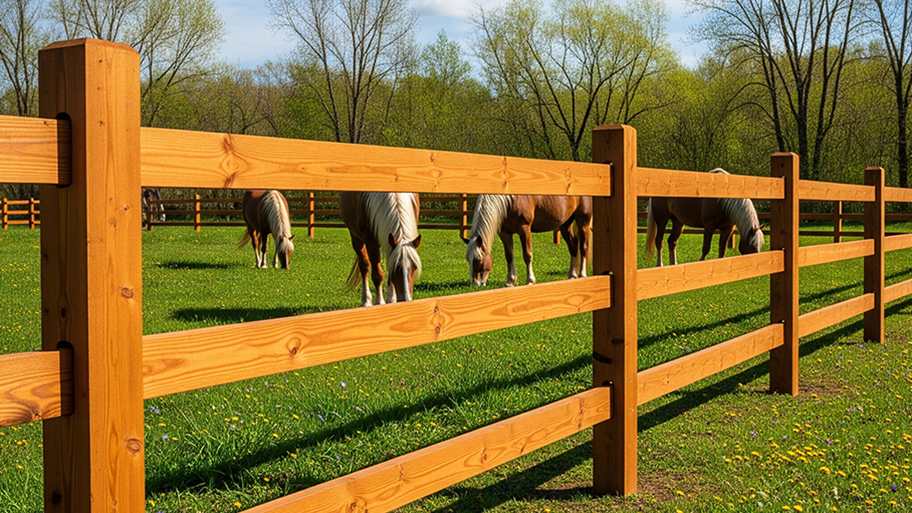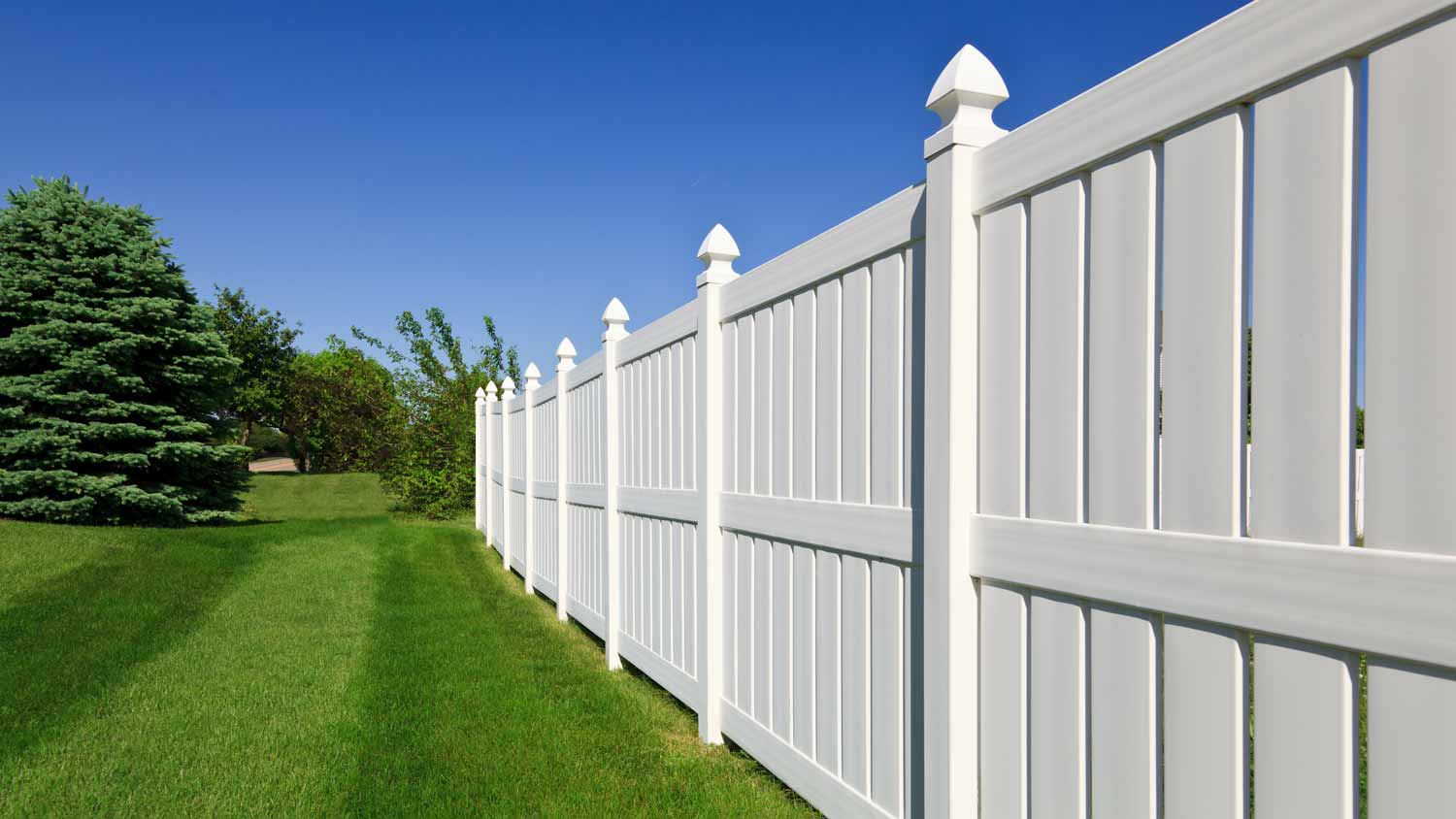
Explore the key factors that impact vinyl fence installation costs in Columbus, OH, including labor, materials, permits, layout, design, and yard conditions.
A simple spring can make all the difference


A gate slamming strongly on a windy day is noisy and prone to damage. Plus, if your gate is constantly swinging open, it’s a privacy problem and backyard security risk—especially when you have kids and pets playing in your yard.
An inexpensive spring can solve the slamming and security issues by keeping your gate closed after it swings shut. It also results in smoother closure, reducing the chance of premature gate repairs or replacement.
Fortunately, this is a DIY job even the least handy homeowner can tackle in minutes. Follow this simple step-by-step guide to learn how to install a gate spring.
A spring for a gate won’t work effectively if the gate itself isn’t sitting properly. Fix sagging gates and ensure they smoothly swing before you set up the spring.

Deft drill work prevents sloppy screw settings that can affect the spring’s performance or damage the mechanism or your gate.
With the gate closed, check the spring position and mark screw holes before digging out your drill. Always check the manufacturer’s instructions, as gate spring positions vary depending on the model. There are usually photos to illustrate the correct position. However, standard guidance is as follows:
The spring is typically angled going to the right on the hinge side of the gate.
The top of the spring is often labeled so and will have the tightening tension knob there.
Mark the screw holes for the bracket that attaches to the gate (on the hinge side) and for the one that connects to the gate post, with the spring positioned as vertically as possible.
Right-hand opening gates usually have the top bracket attached to the gate post with the bottom bracket on the gate, and left-hand opening gates are the other way around.
Drill pilot holes through the post and gate on the marked spots. Pilot holes help prevent gate or post wood from splitting or cracking when you put in the screws and allow you to more accurately and efficiently apply the screws. Using a 9/64-inch or 7/74-inch drill bit usually works. Drill the four provided screws securely into place.
Note: If you're attaching the spring to a thick metal gate, you might have to substitute the screws in the kit for strong self-tapping screws that create a hole and thread simultaneously. When you have a brick gate post, you’ll need to insert wall plugs into the drilled holes to anchor the screws into the masonry securely.
If you don’t get the tension just right, your gate will either not open freely or will continue to swing. Close the gate and use the wrench supplied as part of the kit (sometimes called the tension rod or bar) to adjust the tension via the mechanism at the top of the spring.
The process for adjusting the spring tension varies, so always check the manufacturer’s instructions for details on using the tools and which direction to turn the wrench or bar to increase or decrease torque. The kit often includes a peg; release it to increase or loosen tension and then replace it to lock in the desired tension.
Typically, you shouldn't turn the wrench more than three increments clockwise at a time to prevent over- or under-tightening that can damage the spring or gate.

You might get lucky and have the perfect amount of spring tension on installation. However, there is often a bit of trial and error to hit the preferred amount.
You want the tension to be tight enough to snap shut the gate and keep it firmly closed but not so tight that it slams shut violently, remains slightly ajar, or is stiff to open.
Gate spring installation is an easy and quick DIY job, and the supplies don’t cost a lot. You can make significant savings installing a gate spring yourself. If your existing gate could benefit from the addition of a gate spring, you might only want to call in a local gate repair company if you really aren’t confident handling a drill or you need more significant repairs done at the same time.
If you’re hiring a local fencing contractor to install a new gate, ask them about the closing mechanism or latch type. Depending on the gate type, they may install a gate spring as part of the job and wrap it up in the overall gate installation costs.
While Naaman and Mike were very professional and amicable to work with, there were issues in this project that makes giving a higher rating impossible. We had several communications issues that delayed completion. The roofers accessed the property without communicating with me. Just showed up...
We hired Andrew and the team from Midwest Lightscapes for a custom lighting design and installation on a Victorian Village home. The house had outdated low-voltage halogen outdoor lights and many of them were not working. Andrew designed and installed a new system including uplighting on the...
Mr. Potter is professional and gave us excellent advice for the fence. He is honest and straight forward. His crew finished the job quickly and did an excellent job. The fence is beautiful and is a major improvement of our backyard.
Excellent work; great attention to detail; makes good suggestions but always goes along with what the customer requests; clean and tidy; intelligent; very reasonable rates. I would definitely hire him again for other home projects. He can do a variety of different jobs including: drywall,...
Installed a fence in the back yard. High quality cedar fence.
HAD ISSUES WITH RETURNING PHONE CALLS DURING BID PROCESS AND SCHEDULING JOB. BUT JOB DID COME IN $100 LESS THAN BID. WORKERS WERE PROFESSIONAL, PROMPT, AND DID NOT GET SEALER ON NEIGHBORING FENCE.
DON'T TRUST THAT THE JOB WILL TURN OUT AS YOU EXPECT. THE OWNER IS NOT CAREFUL ABOUT HOW HE BIDS JOBS. IN OUR CASE, WE SHOWED A PHOTO OF A CEDAR FENCE AND EXPLAINED WHAT WE WANTED. HE BID A PRICE THAT SEEMED GOOD. BUT WE DISCOVERED THE REASON AS THE TEAM BEGAN BUILDING THE FENCE: HE DIDN'T...
From average costs to expert advice, get all the answers you need to get your job done.

Explore the key factors that impact vinyl fence installation costs in Columbus, OH, including labor, materials, permits, layout, design, and yard conditions.

Looking for that rustic charm only a split rail fence can provide? Use this split rail fence cost guide to get an idea of what your fence will total.

A fence can be a beautiful and functional addition to your property. Learn all the factors that determine your fence installation costs in Columbus, OH.

If your vinyl fence has holes, dents, or other minor damage, you can repair it with a few basic supplies. Here’s how to fix a vinyl fence in eight steps.

When it comes to the fence for your home, privacy can be paramount. That’s why privacy fences are such a great choice for many. Find out if they’re right for you.

This step-by-step guide will teach you how to tighten a sagging chain link fence. Improve your fence's appearance and protect your property.